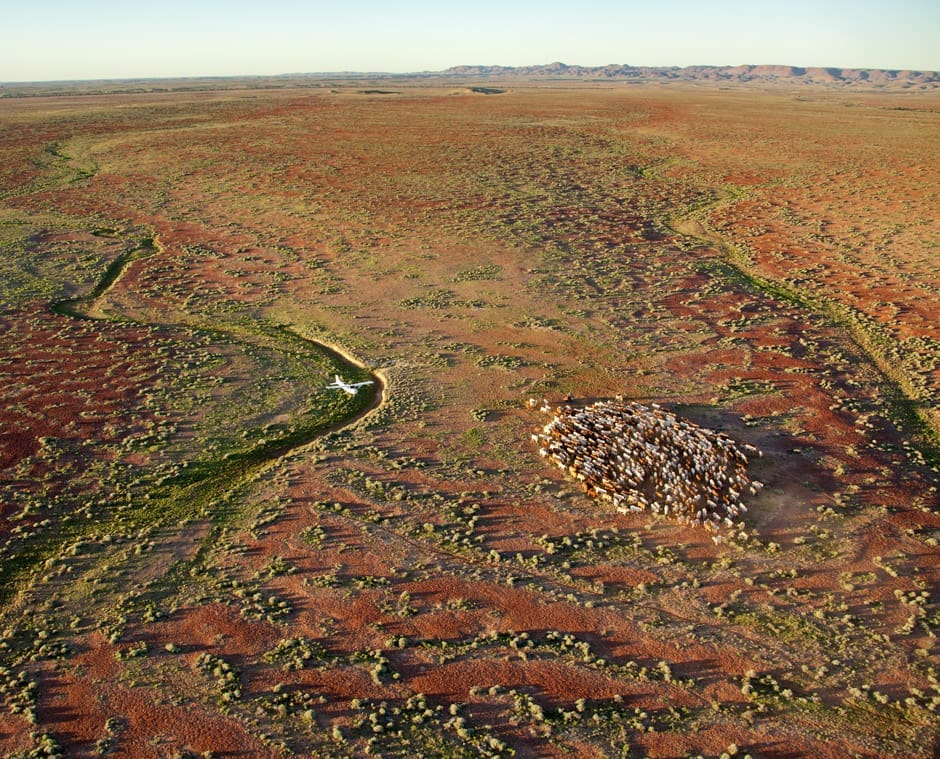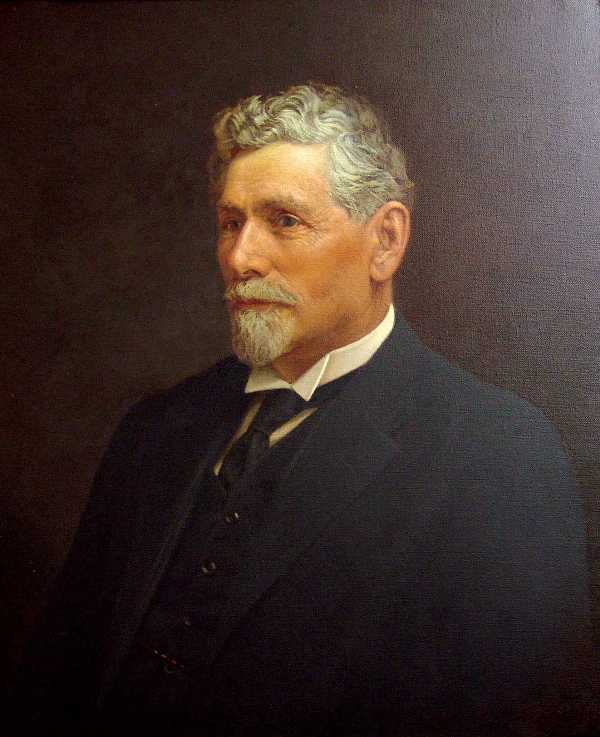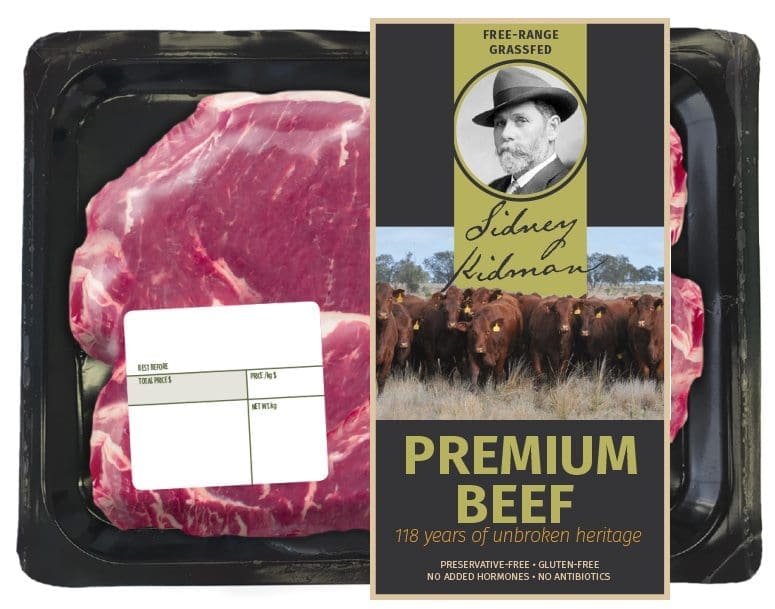
Wide open spaces and a pristine environment will make any Kidman beef brand an ‘easy sell’ in China, marketing experts say
S. Kidman & Co has begun its transition from traditional ‘cattle producer’ to ‘vertically-integrated branded-beef producer’, putting some of the early foundations in place to build consumer brand programs for export and domestic markets.
A fortnight ago, Kidman placed recruitment advertisements on Beef Central seeking a marketing manager – a position which the company has never previously had on its books.
“With new ownership and investment, the company is poised for an exciting period of growth and transformation,” the job description says. “The central focus of the company’s new strategy is to develop marketing and branding strategies to prominently position Kidman’s beef products in key markets.”
The new appointee will work with “sales channel partners, processors (plural), distributors and customers to identify and develop product and market opportunities.”

Connection with the company’s famous founder, Sidney Kidman, adds a lot of provenance value to the Kidman brand name, analysts suggest
Could there soon be an export meat carton or supermarket retail tray pack carrying Sidney Kidman’s iconic image staring back at buyers from the chilled cabinet?
With its rich heritage of 118 years of cattle production and land stewardship under the original custodianship of legendary cattleman, Sir Sidney, it’s often been said that S.Kidman & Co has the foundations for a magnificent – perhaps even unique – branded beef proposition.
While the previous owners chose to ‘stick to core business’ in concentrating on large-scale, efficient cattle production, it was evident before last year’s change of ownership that the cultivation and nurturing of beef brands, under a retained ownership model, was now on the cards.
More than one of the bidding parties jostling for control of the Kidman business last year telegraphed that they saw brand development and retained ownership deeper through the value-chain as a fundamental part of the ‘new’ Kidman.
The Kidman enterprise, minus Anna Creek, which was excised from the original deal on national security grounds, currently runs about 171,000 head of cattle on 80,000sq km of country in three states plus the Northern Territory.
To this point in its history, the company has had little exposure to live cattle export markets, with the overwhelming majority of its turnoff cattle sold to Australian processors for grassfed beef markets across Asia, North America and elsewhere. Depending on seasons, some cattle are at times sold as feeders for grainfed programs.
Where this sits alongside Gina Rinehart’s recently disclosed vision (click here to see Beef Central’s original story) to live export up to 800,000 cattle each year to China, remains to be seen. That development, if it goes ahead, also raises questions about how large any Kidman branded beef program might be.
Beef supply chain experts tell beef Central that to extract any sort of efficiencies at all, a serious branded beef export programs needs at least 35,000 slaughter cattle each year to make it viable.
How might the Kidman brand supply chain take shape?
Speculation is already starting to emerge about how a Kidman branded beef model might look, and the supply chain that might deliver it.
There seems little doubt that the company’s founder will play a significant role in brand identity, leveraging on the colourful history, provenance and custodianship that 118 years of pastoral operations delivers (see Beef Central’s theoretical vision of how a marketing concept might look in a typical retail pack).

Beef Central’s concept of how a Kidman branded beef product might look in VSP form on retail shelves. Click on image for a larger view. Graphic: Naomi Wynn.
Secondly, where would the Kidman cattle for the brand programs be processed, and exported from?
Certainly there is no shortage of opportunity to get service kills carried out in Australia at present, with most beef plants limping along at 50-70 percent of normal operating capacity – or in some cases, closed – due to chronic lack of supply as the national herd hits 20-year lows.
Virtually any export processor would welcome the opportunity to toll-process regular lines of cattle for Kidman, to go into its own brand programs.
The company has typically directed its sale cattle from its northern properties (see map, minus Anna Plains, which was not included in last year’s sale deal) in one of two directions:
- East, into Queensland’s large export processing facilities in the central and southern parts of the state, and
- South, into processing plants in eastern South Australia/western Victoria.
Which direction Kidman slaughter cattle have headed up to now has been mostly influenced by prevailing slaughter cattle prices in each region at the time.
It’s possible that Kidman might set up two separate supply routes for its brand programs – one into Queensland service kill processing, and the other into South Australia. One, or both, might be used at any given time of year, with cattle processed and boned to a common specification at both plants. A common carton lid and branded cyyovac bag would appear on both – only the establishment number would differ.
Such a move would follow a similar strategy as that used by JBS Australia, which processes under a common spec for its highly-successful Great Southern farm-assured grassfed program at sites in Victoria, Tasmania and NSW.
Gina Rinehart’s parallel beef business, Hancock Pastoral, has already established a processing relationship with the Hart family’s John Dee export processing business near Warwick in southern Queensland. That service kill business is entirely focused on her growing Wagyu beef operations, marketed under the new 2GR Wagyu brand.
Its plausible that John Dee might also be enlisted to process for any new ‘Sidney Kidman’ grassfed brand program, but working against that theory is the fact that the Warwick plant is heavily oriented towards high-quality grainfed cattle – servicing its own needs, as well as those of other grainfed customers including Rangers Valley, Stockyard, and 2GR.
Grainfed component?
It’s also possible that S. Kidman may develop a grainfed stream to its brand programs, in addition to grassfed. That would serve two purposes: providing insurance against seasonal fluctuation, and delivering a broader basket of product styles to service different customer needs. Reference AA Co’s diverse grain/grassfed brand programs.
S. Kidman already owns and operates a modest 3000-head feedlot at Tungali, northeast of Adelaide, used mostly to feed heifers for the domestic market. Expansion of that site is somewhat constrained by grain access and license issues, however.
There was a strong rumour circulating a fortnight ago that Ms Rinehart might be about to make a substantial feedlot purchase in southern Queensland. Whether that was likely to be for Wagyu longfed programs, or conventional cattle, was not made clear. Beef Central’s investigations found that sale rumour to be unfounded, for the timebeing, at least.
Regardless of what form and direction it takes, it’s likely that a Kidman branded beef product, perhaps bearing the image of the company’s famous founder and/or the historic ‘SK’ firebrand, might be introduced to customers here and overseas some time in the next 12 months.
Historic Kidman board meeting in Shanghai
The new Kidman cattle company partners held a board meeting in Shanghai last week, reflecting the growing relationship between the Australian Outback Beef shareholders, Australia’s Gina Rinehart (67pc) and China’s Shanghai CRED (33pc).
Speaking after the company’s second board meeting since the new company was formed in late December, chairman Gina Rinehart said in a statement that the meeting reconfirmed Shanghai CRED’s strong support for Hancock’s plans to reinvest profits in the Kidman stations, to improve the stations, safety and cattle welfare.
‘I am so pleased that our partners share our vision to improve Kidman, and are entirely supportive of board decisions to reinvest Kidman profits to build a better Kidman for the future,’ Mrs Rinehart’s statement said.
It’s understood that investments worth tens of millions of dollars have been approved during the new Kidman’s first two board meetings.
‘It’s also exciting to see the enthusiasm from Kidman station managers to be part of these new initiatives, and play important roles in improvement as this necessary investment is rolled out across the stations,” Mrs Rinehart said.

Gina Rinehart and a staffmember present Shanghai CRED chairman, Gui Guojie, with an original ‘SK’ Kidman branding iron, during last week’s inaugural board meeting in Shanghai
Shanghai CRED chief executive Gui Guojie said it was a great honour to host the historic first Kidman board meeting in Shanghai.
‘We are excited and committed to this partnership with Mrs Rinehart for the long term. We both share much respect for Sir Sidney Kidman, his hard work and for building up the largest private land holding in Australia – and indeed the largest the world has ever seen. We entirely support Mrs Rinehart’s drive to reinvest profits and build a better Kidman, something we think Sir Sidney would also view very positively,” Mr Gui said.
‘Reinvesting these profits is good also for the many related industries involved with the Kidman properties. We see the opportunities for job growth in Australia with the many related industries involved with the cattle industry, and the opportunity to supply beef to a nation that needs more beef. Our partnership is very welcomed in China, and China looks forward to our success with Kidman,” he said.
Kidman board member Andrew Robb with Australia needing to export two- thirds of its beef production, the Kidman Australia/China relationship was exciting – just as it was to see the strong unity at Kidman board level and its willingness to reinvest in Australia.
“This investment will benefit many Australians, and improve Australia’s iconic Kidman business,” he said in the company statement.
The Shanghai board meeting heard a presentation on drones after the successful recent trial on Hancock Pastoral’s Kimberley properties and the board reaffirmed its commitment to reinvesting profits into much-needed infrastructure and new technologies to drive efficiencies and productivity, with benefits for improving staff safety and cattle welfare.
Across Kidman cattle properties, roll-outs were in progress of this investment including advanced technologies used on Hancock stations such as walkover weighing and automated weight drafting systems, solar pumps to gradually replace windmills, hydraulic crushes and stock handling equipment ,ultrasound pregnancy testing, investment and technologies enhancing production and efficiencies that have real benefits for safety and animal welfare, the company said.
